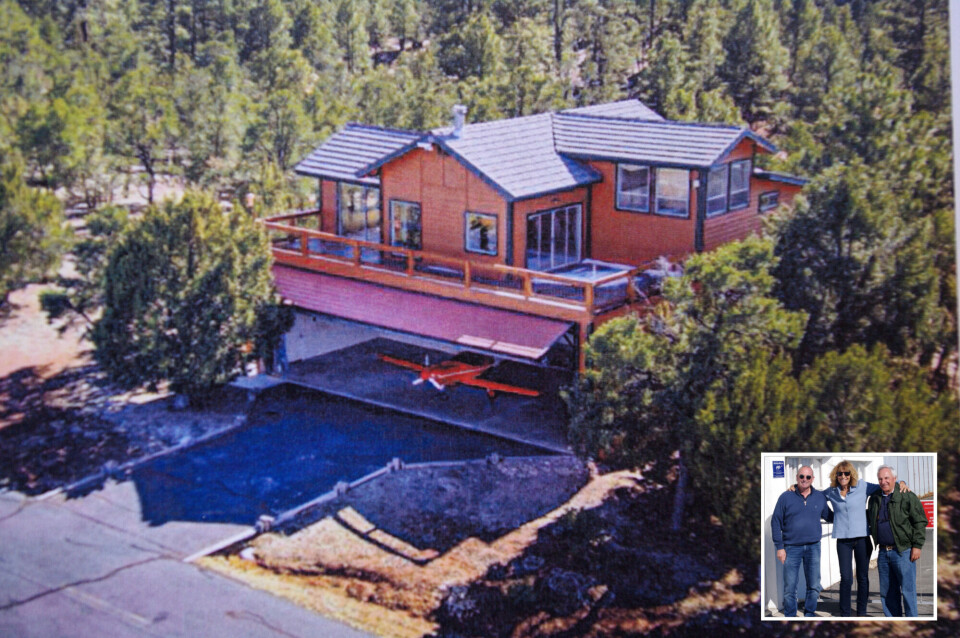-
Travellers risk extra costs under new Eurotunnel ticket rule
Some fare options are less flexible and less forgiving of lateness
-
May will be difficult month for train travel in France, warns minister
Two major train unions are threatening to strike and are ‘not willing to negotiate’, he says
-
New ski night train will link Paris to the French Alps
The Travelski Night Express will begin service this December and start selling tickets in May
Aerovillages project in France: Housing estate with planes in garage
Each home in the development at Chalais Airport in south Charente would also have direct access to a taxiway to the runway

A new housing estate being planned boasts aeroplane parking on every property, with direct access to a taxiway to the runway.
The proposed development, at Chalais Airport in south Charente, will be one of only a handful in France to accommodate aircraft in owners’ garages.
The first was built in the Vendée at Talmont-SaintHilaire, and opened in 1966. Others are at Biscarrosse in the Landes and Gajoubert Air Park in Haute-Vienne.
Work on the new estate began in 2017 but it will only be ready for the first buyers to build their homes in 2024.
Richard Martin, the property developer heading the project, said: “There has been a huge amount of paperwork, and it keeps on coming.
“After seeing that it was feasible, we had to change the plan local d’urbanisme, which involved getting the support of the town council, and then getting it approved by the prefect for Charente.”
The latest delay came after discovering an environmental study, required before planning permission can be approved, will take a full year.
The airport at Chalais, which has a 1,000m grass runway, is owned by the local maison de retraite.
In the past, this has been a bone of contention in the town as the benefactor who left it to the old people’s home inserted very strict clauses in the will.
It is now used mainly by the local flying club, although there are plans for an aeroplane repair and servicing garage to be established too.
With its circulation aérienne publique status, all French and foreign aircraft have Chalais on their maps and can land there.
This will not change if the housing estate is approved.
Mr Martin’s company has signed a promesse d’achat with the condition they will get planning permission. He is not willing to disclose the price.
Mr Martin, from Ile d’Oléron in Charente-Maritime, has been flying for 20 years.
He says his work on various projects around France means he flies two or three times a week, both in a light aircraft and an ultra-light.
Environmental impact
“Apart from the cost of the planes, which are similar to those of a smart car, flying is actually cheaper than motoring,” he said.
“My ultra-light burns 15 litres of petrol an hour, but it goes at 200kph in a straight line, which means it uses less fuel than my Citroën C3 Aircross, as well as being quicker.”
He also points to another environmental benefit of flying: “We take off on a grass landing strip of 1,000m, and land at another strip of 1,000m, some 250km away, without touching any roads or disfiguring any landscape.
“There was a Swiss eco architect, Eric Muller, who said that with an airstrip of 1,000m, a commune is linked to the rest of the world – but with a road of 1,000m, you just go from one end to another.”
Mr Martin is convinced there is enough demand for the project, with latest figures showing there are 105,000 private leisure pilots in the country.
“What makes this project particularly interesting is that Chalais is around an hour by car from Bordeaux Airport, and other similar projects around the world always have a number of airline pilots among the people buying these homes.
Charente, too, is a lovely place to live, and I am sure there will be some British pilots interested in the site.”
In keeping with the ecological theme, houses will meet eco building standards during construction, and will be designed to use as little energy as possible.
The estate’s roads and taxiway will all be made of perforated concrete blocks, as used in most new supermarket car parks, which allow grass to grow.
Traffic rules on the estate will dictate that aircraft have priority over cars. Once all three stages of the project have been completed, there will be 30 lots on the 14.4 hectare site.
These will vary in size from 1,477m² to 2,407m². Prices have not been finalised, but Mr Martin said he expects completed houses will be in the €300,000 to €700,000 range, depending on the specifications of the buyers.
Planes will be limited to the light aircraft category, which means they can weigh up to 5.5 tonnes. Commercial operations from the housing estate will not be allowed.
Previous articles
French aircraft giant Airbus delivers last A380 superjumbo to Emirates
Investigation into serious landing error on plane at Nantes airport
























